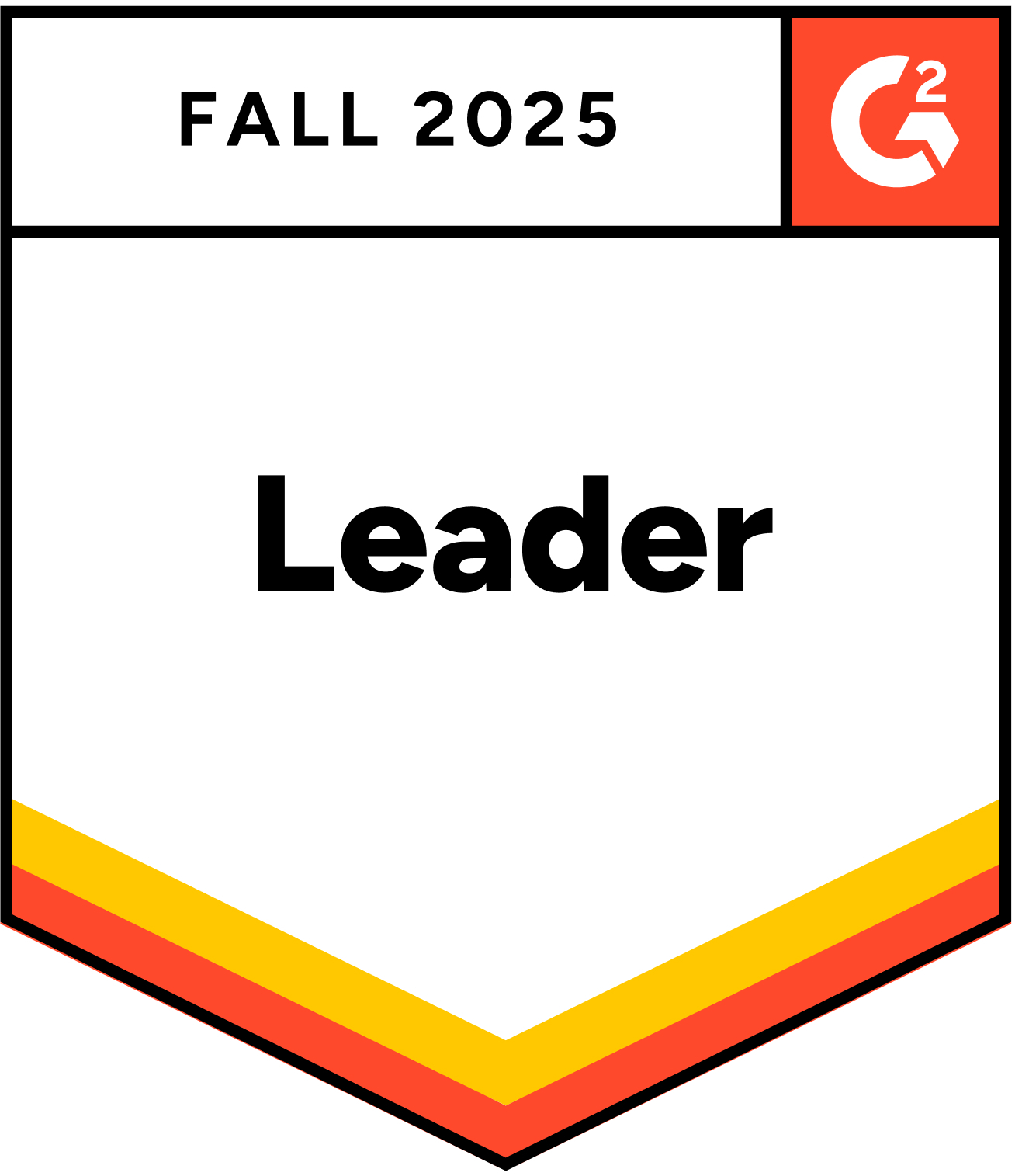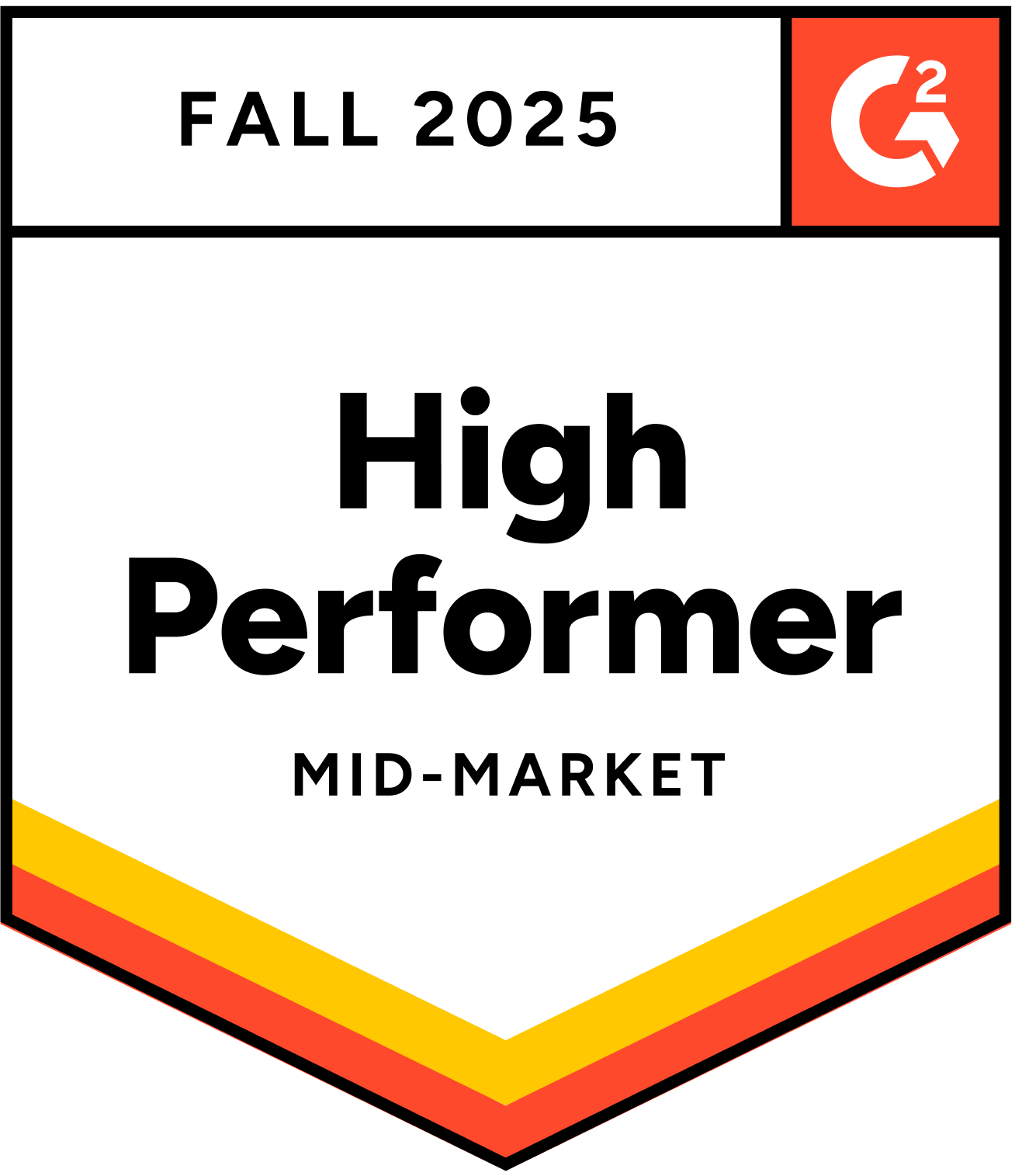Your job description isn’t just a list of duties – it’s your ticket to finding the perfect candidate for your job req.
But, truth be told, creating the perfect job description can be hard.
It involves writing content that truly resonates with top talent, striking the right balance between being detailed and concise, and ensuring it complies with legal and company policy requirements. And let’s not forget the multiple rounds of edits and approvals that can cause delays in filling urgent and important positions.
In fact, a staggering 60% of job descriptions harbor issues, ranging from clarity in roles and responsibilities to their overall appeal to applicants.
When done right, optimized job descriptions have a significant impact on recruiters, sourcers, and job seekers alike.
- Recruiters become more efficient, which allows them to spend more time speaking with candidates and focus on the more strategic aspects of talent acquisition.
- Sourcers are able to more precisely target great-fit candidates with the desired qualifications and skills.
- Optimized job descriptions attract more attention from job seekers, improving their search experience and ensuring they see the roles that truly align with their skills and aspirations.
Optimized job descriptions also have higher click-through rates, better search rankings, and reach a wider audience. In addition, if gender and other biases are addressed, they attract diverse candidates, fostering a fairer and more equitable hiring process for everyone involved.
Discover how data, insights, and the ability to engage with candidates at scale can be your secret sauce to streamline the talent sourcing process.
Move Your Talent Sourcing From Chaotic to Strategic!
How to optimize a job description
You can make a job description better by understanding and working on a few dimensions job seekers care most about – these are typically the most crucial to recruitment success.
Let’s take a look.
1. Job titles
While fun and quirky, overly creative titles just don’t do the trick for one simple reason: they are not searchable on job boards. That means that your job profile may not reach the right candidates.
For example, you may be looking for a “data ninja” or “social media rock star,” but these are not the search terms your target audience will likely use. Instead, we recommend using a simple title that’s relevant to the job description – and be as specific as possible! For example, “python developer” instead of “software developer.”
Also, make sure your job title doesn’t look like spam or contain information like job location or salary. A simple and specific title like “Technician – CT Technician” will perform better than “Technician – CT Technician | T – CT | Boston, Massachusetts | $2528.76 Weekly.”
2. Format and readability
To enhance readability and engagement, there are two parameters to consider: length and form.
If your job description is too long, it won’t get the attention it deserves! Consider using bullet points to break your content into more digestible pieces rather than using full paragraphs, which are harder to skim.
When it comes to form, there are three basic types:
- Generic: These use straightforward and plain language to get the point across.
- Formal: Descriptions with a formal tone tend to use a great deal of business jargon and buzzwords.
- Casual: Posts with a casual tone use conversational language and humor.
Of these three, generic job descriptions get more attention than others.
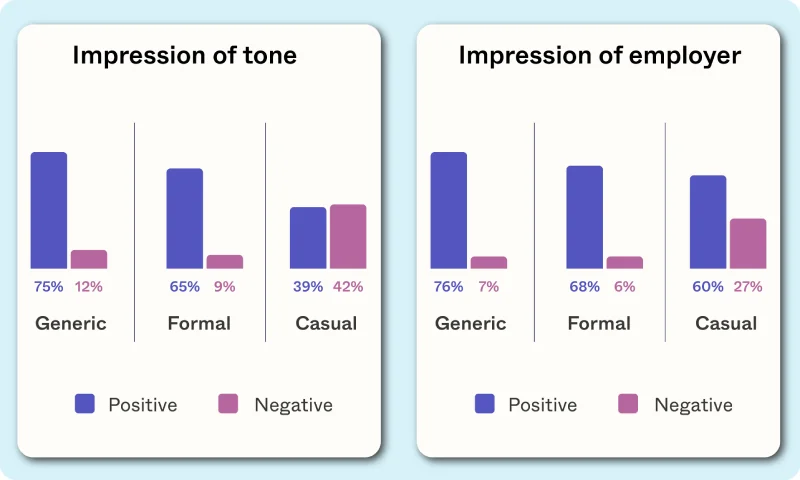
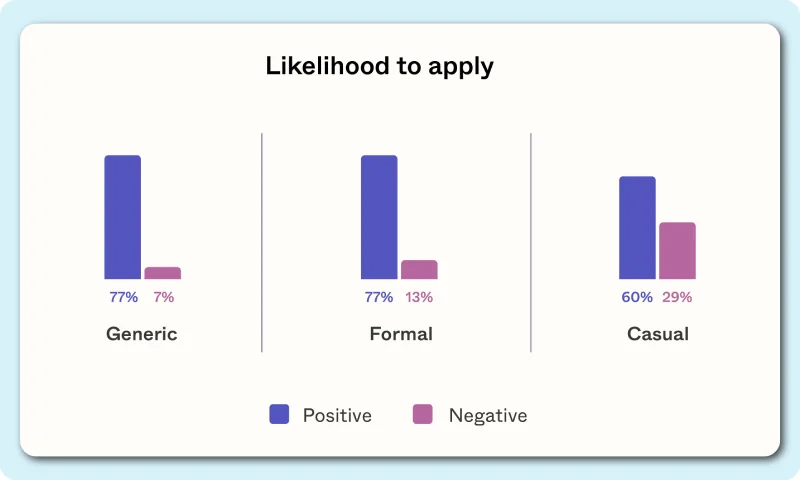
3. Responsibilities and qualifications
This section is very important to candidates, painting a picture of their day-to-day responsibilities and the qualifications that make them a great fit for the position. When drafting your job description, be specific and detailed but succinct.
- List specific tasks and projects that the candidate will work on and/or will need to have prior experience with. But remember, this is not an exhaustive list!
- Consolidate responsibilities and qualifications into a maximum of four to six bullet points.
- Don’t write the obvious requirements, like “must be able to prioritize work to meet deadlines.”
- Include at least three bullets when it comes to experience, education, and skills required. But again, this isn’t a bucket list, so keep it short.
4. Salary and benefits
This is another section that is very important to candidates – and rightly so! Be sure to include a dedicated segment on compensation and perks in the job description. Highlighting key points will greatly enhance your listing’s appeal to potential candidates.
- Salary: Provide a salary range, including the time period, instead of just a number. For example, “$20/hour” or “$30k/year” instead of “$30k.” We suggest going one step further and also including a breakdown of the compensation package.
- Benefits: Strike a balance between describing the job and enticing the candidate with benefits. We suggest listing benefits in a separate “perks” section to make them more visible.
Now, let’s do a deeper dive into how our free job description optimizer works and what it can do for you!
(We’re going to get a little bit technical here, but don’t worry – enjoy the walkthrough and know that it all boils down to a very simple dashboard.)
Identifying Dimensions to Score and Optimize
Over the years, a great deal of research has been done to figure out exactly which dimensions are important to make job descriptions attractive to candidates. In addition to secondary research, we also asked for a list from our large language model (LLM).
Based on our findings, we decided on ten dimensions to use when scoring and optimizing a job description:
- Job title
- Job location
- Format and readability
- Qualification
- Role and responsibility
- Company information
- Salary
- Benefits
- Equal employment opportunity statement
- Work flexibility
Job Description Scoring
Let’s take a look at how each section is scored using the sample job description below, starting with section detection.
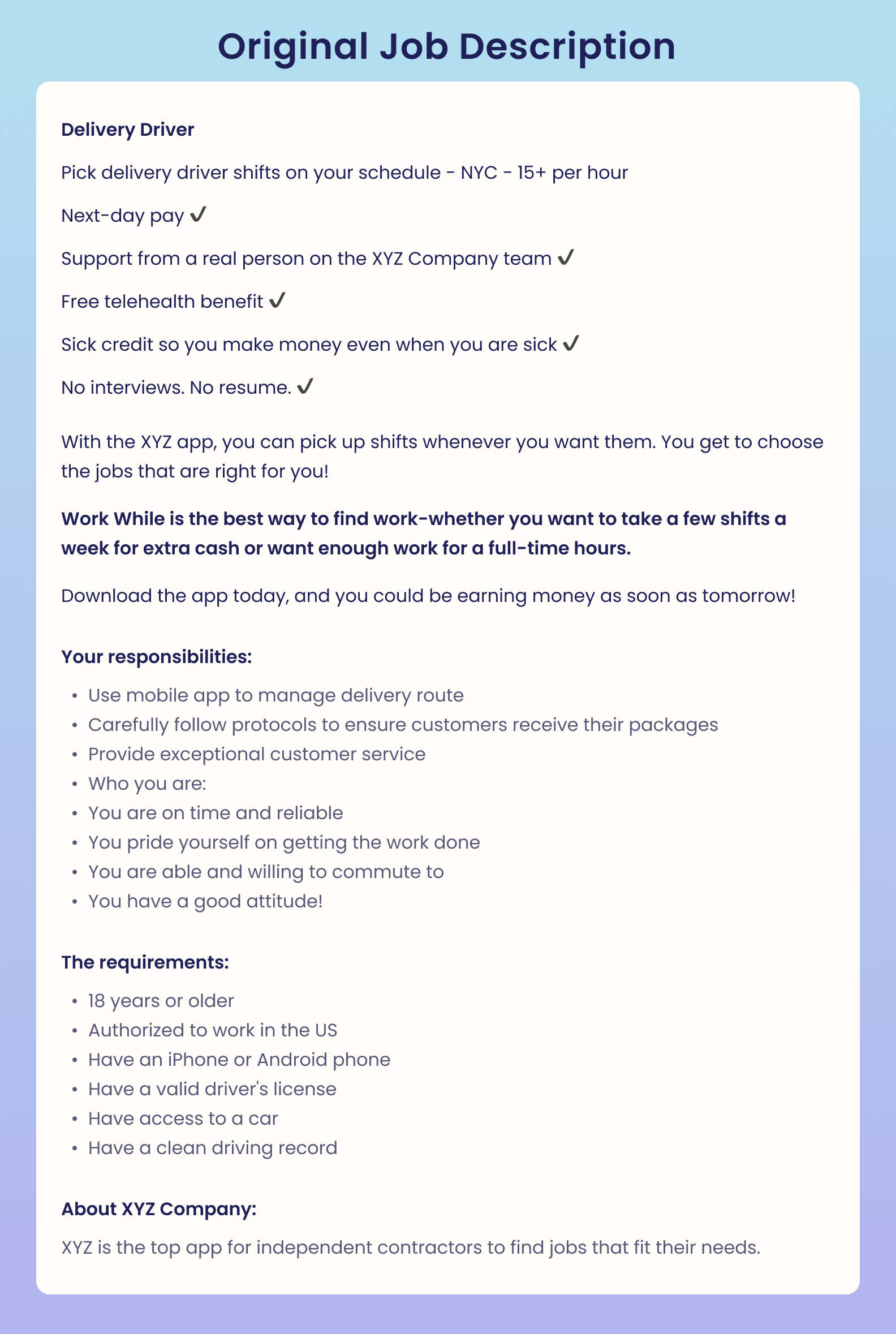
Section detection scoring
Our sample job description includes the following sections, which have been scored 1 or 0, based on whether or not they have been included.
- Job title: 1
- Location: 0
- Responsibilities/duties: 1
- Qualifications/requirements: 1
- Benefits: 0
- Salary/compensation: 0
- Equal employment opportunity statement: 0
Our sample job description receives a 0.39 score. You may have done the math and wondered why the score isn’t 0.30 – that’s because each section is weighted differently.
In order to improve this score and create a job description that will perform better, we need to look at the sections which have received a 0 score. A value of 0 points to two possible issues:
- The information is not present
- The information is present, but is unclear and/or complex
Once these sections have been updated, the score will improve. If all sections are present and optimized, the overall score will be 1.
We may have gotten into the weeds a bit here, but we want you to know the thought process!
When you use our tool, you will see a simplified version of the scoring we’ve walked you through – in fact, each part of your job description will be given a low, medium, or high score to keep things simple, just as you see below.
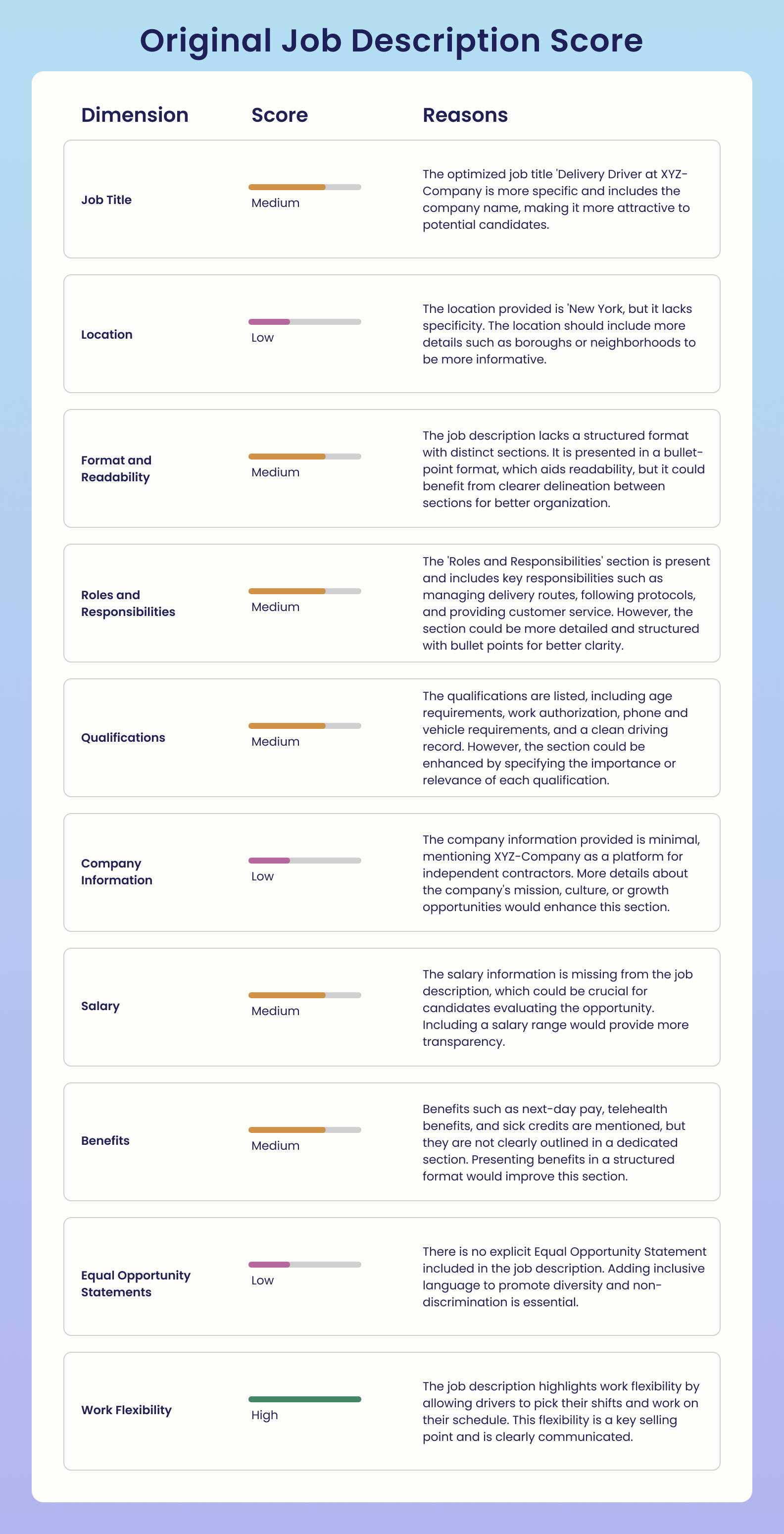
Job Description Optimization
After you’ve received your scores, our tool provides an optimized job description, along with the updated scores.
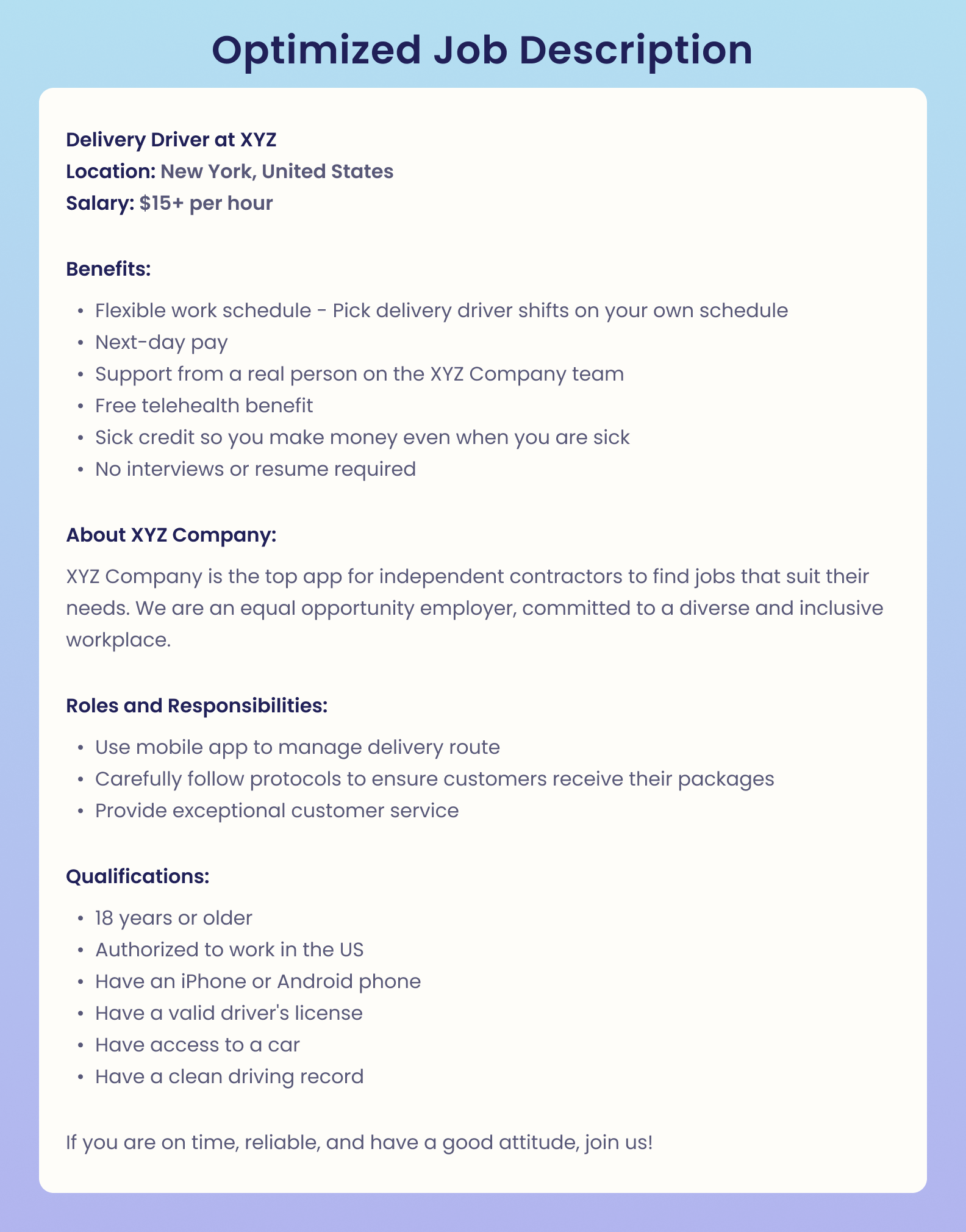
Following optimization, the final overall score stands at 0.89. Check out the dashboard feedback on our revised description.
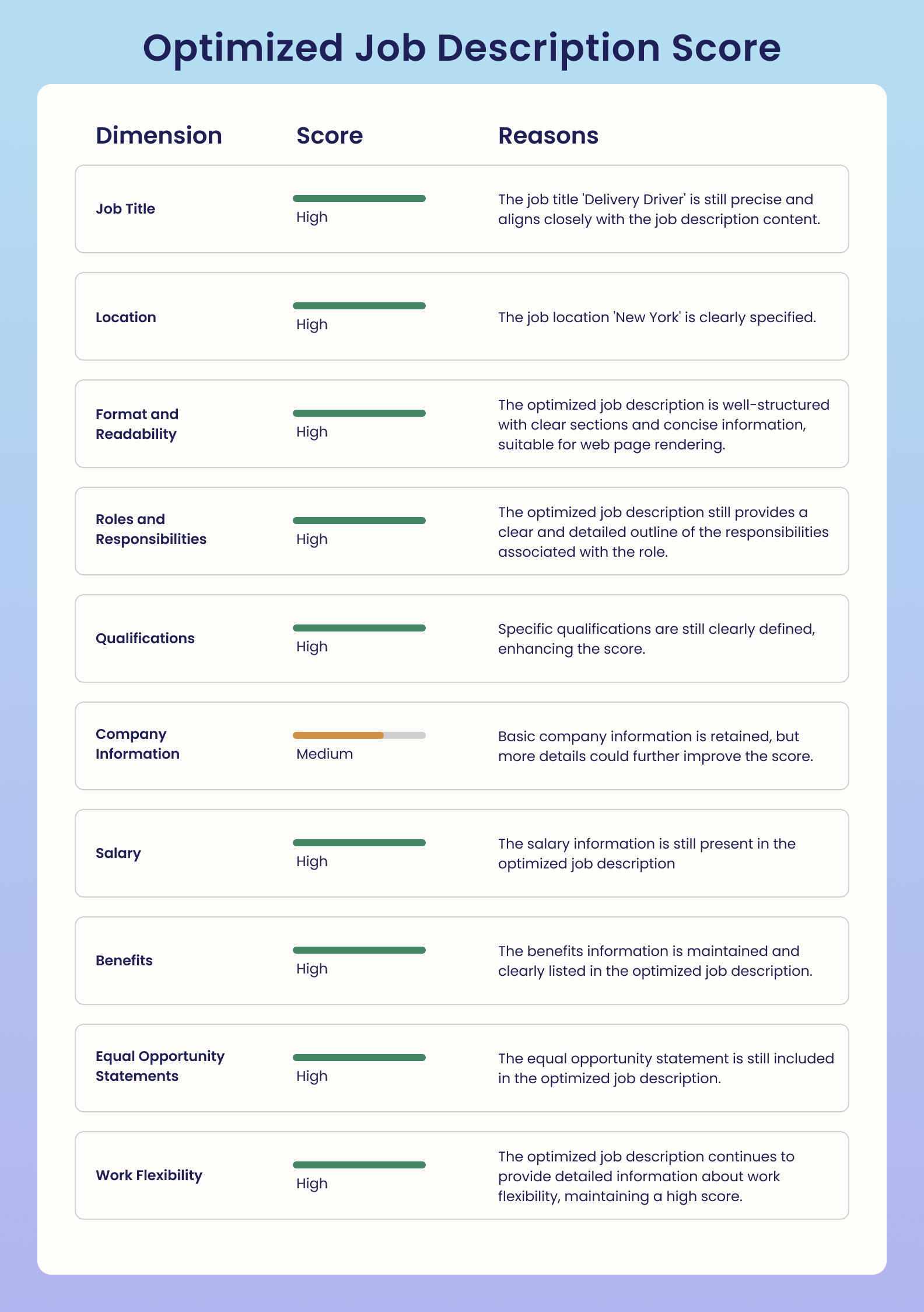
Conclusion
Mastering the science of job descriptions is crucial for modern day talent acquisition. Your job description might be the first-ever communication your company has with potential candidates and it needs to stand out!
Leverage generative AI and optimization techniques to create job descriptions that are more appealing and relevant to candidates. As technology continues to shape the future of recruitment, staying ahead with optimized job descriptions will be key to attracting top talent.
Sign up for a demo
Note that our free tool (above) gives you just a tiny peek into what generative AI can do for your job content.
To access our full AI-driven job content optimization capabilities, sign up for a demo.
Follow us on X and LinkedIn to see how Joveo can help you get the most out of your recruitment advertising!




